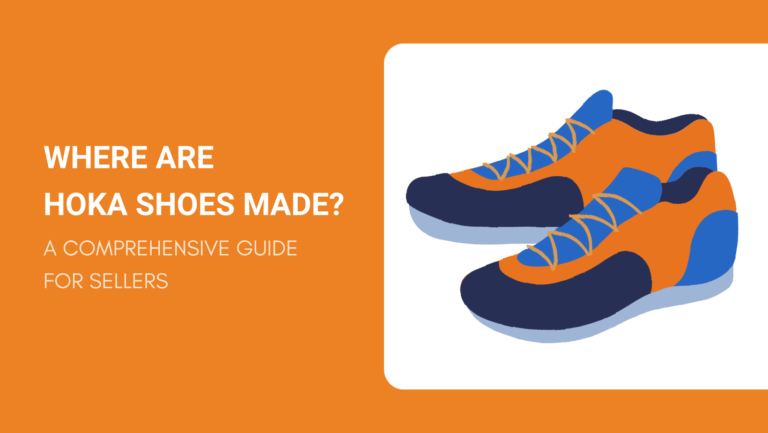Ever wondered where your favorite running shoes come from? Hoka, a brand known for its distinctive oversized midsoles, has captured the hearts of runners worldwide.
Hoka shoes are primarily manufactured in China and Vietnam, with some production also taking place in Cambodia, Dominican Republic, and Philippines.
Despite being a French-American company, Hoka doesn’t produce any shoes in the USA. This global manufacturing approach allows them to create high-quality footwear that meets the demands of athletes across different terrains and running styles.
Understanding where your running shoes are made can provide insights into their quality, design, and the company’s production practices.
So, in this article, we’ll shed light on where Hoka shoes are made, and what other shoe sellers can learn from them.
The Origins of Hoka Shoes

Hoka was founded in 2009 by two French trail runners, Nicolas Mermoud and Jean-Luc Diard.
Their goal was to design running shoes that could handle steep descents while providing better cushioning and stability.
Unlike traditional running shoes at the time, Hoka introduced a maximalist approach—featuring oversized midsoles that absorbed impact and offered a smoother ride.
The name “Hoka” comes from the Māori phrase “Hoka One One” (pronounced ho-kah oh-nay oh-nay), meaning “fly over the earth.” This reflects the brand’s emphasis on lightweight, high-performance footwear that enhances a runner’s experience.
Initially embraced by ultrarunners for its comfort and shock absorption, Hoka quickly gained traction among casual runners, hikers, and even medical professionals.
The brand’s innovative designs and focus on biomechanics helped it carve out a distinct space in the athletic footwear industry, leading to its acquisition by Deckers Brands in 2013—the same company behind UGG and Teva.
Today, Hoka continues to expand its offerings beyond running shoes, developing models for trail running, hiking, and everyday wear. Its commitment to comfort and performance has made it a top choice for athletes and footwear enthusiasts worldwide.
Where Are Hoka Shoes Made?
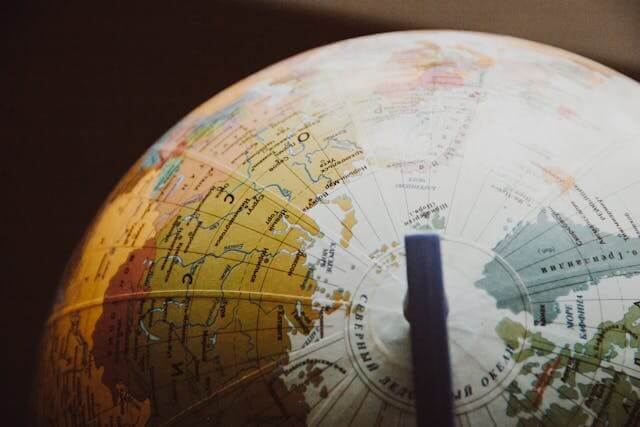
Hoka shoes are manufactured in several countries across Asia and the Americas. Each location offers unique advantages for production, from skilled labor to cost-effectiveness and strategic positioning.
China
Despite the shift of many footwear brands to Vietnam, China remains a key manufacturing hub for Hoka. The country has decades of expertise in producing high-performance footwear, making it essential to Hoka’s supply chain.
- Advanced technology & precision manufacturing – China’s factories specialize in high-tech shoe production, ensuring consistent quality, especially for Hoka’s complex midsole designs and cushioning technologies.
- Established infrastructure – China has a deeply integrated supply chain, allowing for seamless access to materials, components, and skilled labor.
- Higher production capacity – With thousands of footwear factories, China can scale production quickly to meet demand.
- Research & development (R&D) – Many of Hoka’s prototypes and premium models are designed and tested in China before mass production.
While labor costs in China have risen, its efficiency, expertise, and infrastructure make it a core location for Hoka’s manufacturing.
Vietnam
Vietnam is another major manufacturing hub for Hoka, particularly for high-volume production. Brands like Nike and Adidas have also shifted a significant portion of their production to Vietnam, benefiting from:
- Lower labor costs than China – Vietnam provides cost-effective production while maintaining good quality standards.
- Strong footwear industry – Vietnam is one of the top 3 footwear exporters globally, with a skilled workforce specializing in sports and performance shoes.
- Favorable trade agreements – Vietnam benefits from CPTPP (Comprehensive and Progressive Agreement for Trans-Pacific Partnership) and other trade deals that reduce tariffs when exporting to major markets like the U.S. and Europe.
Hoka leverages Vietnam’s manufacturing for cost efficiency and large-scale production, complementing the more technical production handled in China.
Cambodia
Cambodia has gained attention as an alternative manufacturing location for footwear brands. While Hoka does not manufacture as much here compared to China and Vietnam, Cambodia offers:
- Lower labor costs – One of the most affordable labor markets in Asia.
- Diversified supply chain – Brands use Cambodia to reduce reliance on China and Vietnam.
- Duty-free export agreements – Cambodia enjoys preferential trade benefits with major markets, reducing costs for U.S. and European shipments.
Dominican Republic
The Dominican Republic plays a minor role in Hoka’s production but serves as a strategic location for:
- Faster shipping to North America – Close proximity to the U.S. reduces lead times.
- Regional diversification – Allows Hoka to distribute more efficiently within the Americas.
- Growing footwear industry – While small, the Dominican Republic is developing its expertise in footwear production.
Philippines
The Philippines is a small-scale manufacturing location for Hoka but has expertise in athletic and outdoor footwear production. Some benefits include:
- Experienced workforce – The country has a history of producing high-performance shoes.
- Specialized production – Some Hoka models may be made here due to the country’s expertise in durable footwear.
Why Does Hoka Manufacture in These Countries?
Hoka manufacturers in China, Vietnam, Cambodia, the Dominican Republic, and the Philippines for several strategic reasons.
These locations offer a balance of cost-efficiency, skilled labor, trade advantages, and supply chain stability, making them ideal for producing Hoka’s high-performance running and outdoor shoes.
1. Advanced Footwear Manufacturing Expertise
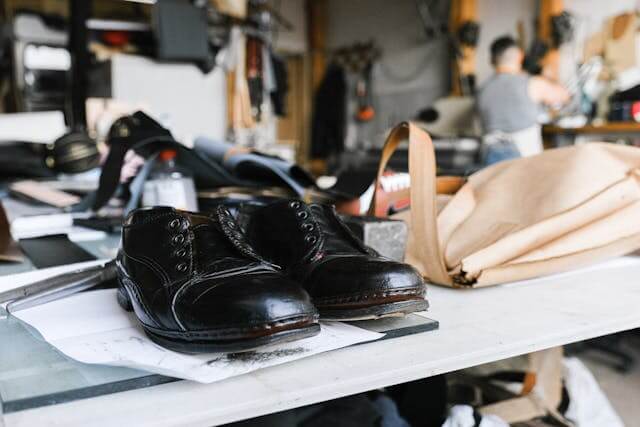
China and Vietnam, in particular, have decades of experience in producing sports and performance footwear. They provide:
- Highly skilled labor – Workers are trained in complex shoe assembly, including Hoka’s specialized cushioning technologies and durable outsoles.
- Cutting-edge technology – Factories in China and Vietnam use automated machinery for precise stitching, molding, and sole bonding, ensuring product consistency.
- Research & Development (R&D) support – Some of Hoka’s prototype testing and sample production occur in China before mass production.
2. Cost-Effective Production Without Sacrificing Quality
Labor costs in China have risen, but Vietnam, Cambodia, and the Philippines offer more affordable wages while maintaining high-quality standards. The cost advantages include:
- Lower wages in Vietnam and Cambodia compared to China – Reducing overall production costs.
- Optimized material sourcing – Proximity to textile and rubber suppliers helps lower material costs.
- Efficient large-scale production – High production capacity allows for mass manufacturing at competitive rates.
3. Trade Agreements and Tariff Benefits
Hoka benefits from trade agreements that help reduce import/export taxes:
- Vietnam is part of the CPTPP (Comprehensive and Progressive Agreement for Trans-Pacific Partnership), giving it favorable trade terms with key markets.
- Cambodia and the Philippines benefit from duty-free access to the EU and U.S. under preferential trade agreements.
- The Dominican Republic is part of CAFTA-DR (Central America-Dominican Republic Free Trade Agreement), making it easier to distribute shoes to North America.
These agreements allow Hoka to keep prices competitive in global markets.
4. Geographic Diversification for Supply Chain Stability
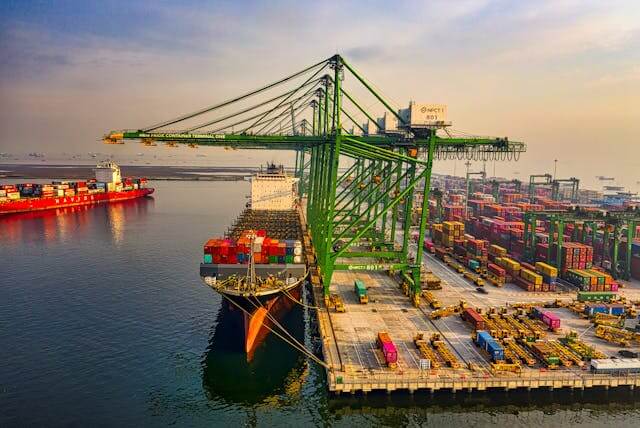
Manufacturing in multiple countries helps Hoka reduce risks related to tariffs, trade restrictions, and supply chain disruptions.
- China-Vietnam diversification – If issues arise in one country (e.g., factory shutdowns or tariffs), production can shift to the other.
- Cambodia and the Philippines – Help balance production loads and provide backup manufacturing options.
- The Dominican Republic – Acts as a regional hub to ensure faster deliveries to North America.
By spreading out production, Hoka minimizes risks and ensures steady supply to meet global demand.
The Manufacturing Process of Hoka Shoes
Hoka’s shoe manufacturing process involves multiple stages, from initial design to final distribution. Each step is crucial in creating the brand’s signature lightweight, cushioned footwear.
1. Design and Concept Development
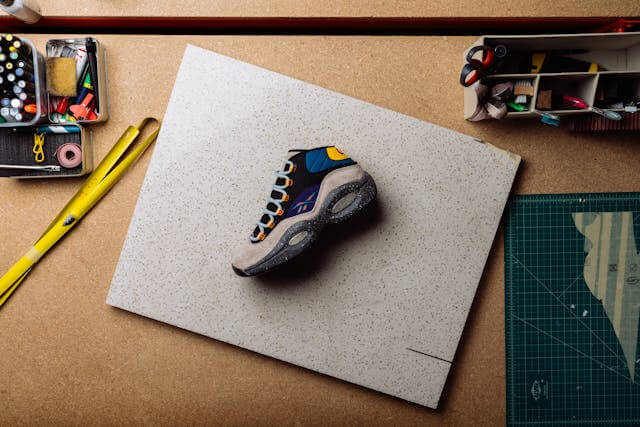
Hoka’s design team starts by analyzing market trends and runner feedback. They use this data to create innovative concepts that address specific needs. Designers and engineers collaborate to sketch initial designs and create digital 3D models.
These models are refined through multiple iterations. The team considers factors like weight distribution, cushioning, and stability. They aim to balance performance with comfort and style.
Hoka often incorporates new technologies into their designs. For example, their Meta-Rocker technology helps create a smoother heel-to-toe transition.
2. Material Selection
Hoka carefully selects materials for each shoe component. The upper often uses breathable mesh or engineered knit fabrics. These materials provide ventilation and flexibility while keeping the shoe lightweight.
For the midsole, Hoka primarily uses EVA (Ethylene-Vinyl Acetate) foam. This material offers excellent cushioning and shock absorption. Some models incorporate rubberized foam for added durability.
The outsole typically uses high-abrasion rubber. This material provides traction and durability for various terrains. Hoka may use different rubber compounds for specific shoe models, tailoring them to road or trail use.
3. Prototyping and Testing
Once materials are selected, Hoka creates physical prototypes. These prototypes undergo rigorous testing to ensure they meet performance standards. Tests include:
- Durability assessments
- Cushioning evaluations
- Flexibility measurements
- Traction tests
Hoka also conducts wear tests with athletes. These testers provide feedback on comfort, performance, and any issues they encounter. The design team uses this information to make further refinements.
4. Cutting and Shaping
After finalizing the design, Hoka’s manufacturing partners begin production. They use precision cutting machines to shape the upper materials. These machines ensure consistency across all shoe sizes.
The midsole and outsole components are molded separately. Molds are created based on the final design specifications. These molds shape the foam and rubber materials into the desired form.
Quality control checks occur throughout this process. Workers inspect cut pieces for any defects or inconsistencies.
5. Assembling the Shoe
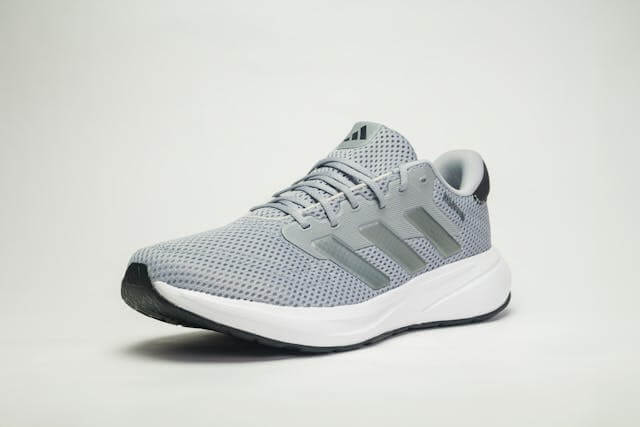
Assembly begins with the upper. Workers or automated machines stitch together the various components of the upper. This includes the toe box, heel counter, and any overlays for support.
Next, the upper is attached to the lasting board. This provides structure to the shoe. The midsole is then bonded to the upper using strong adhesives.
Finally, the outsole is attached. This step often uses both adhesives and stitching for a secure bond. Workers carefully align all components to ensure proper fit and function.
6. Midsole and Outsole Production
Hoka’s signature oversized midsoles are typically created through compression molding. This process involves:
- Placing EVA foam pellets into a mold
- Applying heat and pressure to fuse the pellets
- Cooling the mold to set the final shape
The outsole production often uses injection molding. Liquid rubber is injected into molds under high pressure. This creates precise tread patterns for optimal traction.
Some Hoka models feature dual-density midsoles. These combine different foam densities for targeted cushioning and support.
7. Quality Control and Inspection
Hoka implements strict quality control measures throughout production. Each shoe undergoes multiple inspections. Workers check for:
- Proper assembly and alignment
- Consistent cushioning
- Secure bonding between components
- Correct sizing and fit
Random samples undergo more intensive testing. This may include simulated wear tests and stress analysis. Any shoes that don’t meet Hoka’s standards are rejected.
8. Packaging and Distribution
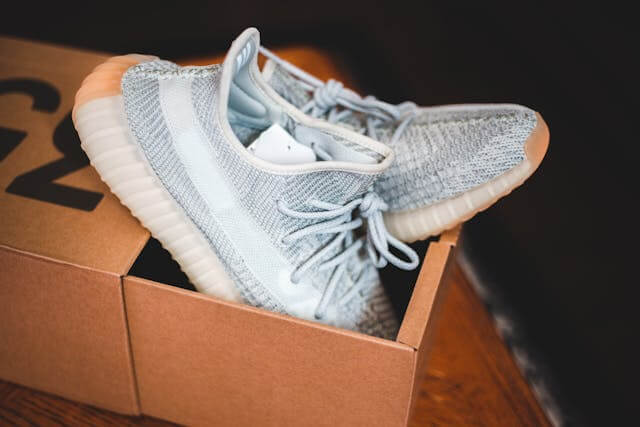
Once shoes pass quality control, they’re prepared for shipping. Each pair is stuffed with paper to maintain shape. They’re then placed in branded boxes with any additional accessories.
Hoka uses a global distribution network to reach retailers and customers worldwide. They have distribution centers in key markets to minimize shipping times.
The company is also working to improve sustainability in packaging. They’re exploring recycled materials and reducing excess packaging where possible.
What Sellers Can Learn from Hoka’s Manufacturing Approach
Hoka’s manufacturing strategy offers valuable lessons for footwear sellers, especially those looking to develop their own brands or source products efficiently. Here are some key takeaways:
1. Leveraging Cost-Effective Manufacturing Without Sacrificing Quality
Hoka primarily manufactures in China and Vietnam, two of the world’s top footwear production hubs. Sellers can take a similar approach by sourcing from these regions, which offer:
- Skilled labor experienced in performance footwear manufacturing.
- Advanced production facilities capable of handling complex shoe designs.
- Competitive production costs that help maintain profit margins.
Lesson: Work with factories that specialize in your product niche to balance cost and quality.
2. Choosing Manufacturers Based on Specialization
Hoka collaborates with factories skilled in high-performance footwear, ensuring its shoes meet the needs of athletes and outdoor enthusiasts.
Vietnam, for example, has become a go-to location for high-quality sports shoes due to its expertise in synthetic materials and innovative sole construction.
Lesson: If you’re sourcing shoes, research which countries and factories specialize in your desired product type—whether it’s running shoes, casual sneakers, or leather boots.
3. Investing in Advanced Materials and Technology
Hoka integrates cutting-edge materials like lightweight EVA foam and durable rubber outsoles. Its manufacturers use precision engineering to develop cushioned midsoles, a feature that sets the brand apart.
Lesson: Sellers should prioritize sourcing shoes made with high-quality materials and modern production techniques to ensure durability and comfort, which directly impact customer satisfaction and repeat business.
4. Building Strong Supplier Relationships
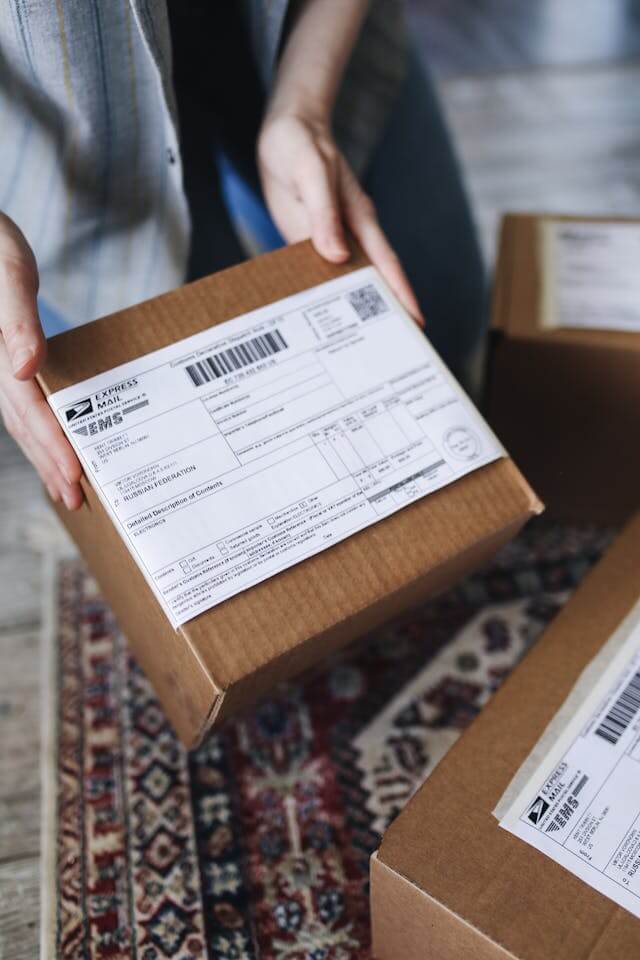
Hoka works with trusted manufacturers to maintain consistency and reliability in its supply chain.
Instead of constantly switching suppliers for cost savings, the brand benefits from long-term partnerships that allow for better quality control, smoother logistics, and potential cost advantages over time.
Lesson: Develop strong relationships with suppliers to negotiate better pricing, improve production quality, and streamline fulfillment processes.
5. Balancing Scalability with Sustainability
As sustainability becomes more important, Hoka has introduced eco-friendly initiatives, such as using recycled materials in some of its footwear. Many top-tier manufacturers in China and Vietnam now offer sustainable production methods.
Lesson: If you’re building a brand, consider working with manufacturers that offer sustainable materials or ethical production practices—this can serve as a strong selling point for eco-conscious customers.
Learn More:
- Where Are Salomon Shoes Made
- Where Are Adidas Made
- Where Are Keen Shoes Made
- Where Are Asics Made
- Where Are Puma Shoes Made
- Where are Nike Shoes Made
Frequently Asked Questions
Are Hoka Shoes Made in the USA?
No, Hoka shoes are not made in the USA. While Hoka is an American brand, its manufacturing takes place in overseas factories, primarily in China and Vietnam, with some production in other Asian countries.
These locations are chosen for their expertise in high-performance footwear manufacturing, access to advanced materials, and cost-efficient production.
Although Hoka doesn’t produce its shoes in the U.S., the brand is known for its rigorous quality control and innovative design processes, ensuring that its products meet high standards regardless of where they are made.
Which Company Is Behind Hoka Shoe Production?
Hoka shoes are produced by Deckers Brands, a global footwear company. Deckers also owns other popular shoe brands like Ugg and Teva.
Deckers Brands oversees the design, manufacturing, and distribution of Hoka shoes worldwide. Their expertise in the footwear industry has helped Hoka grow into a recognized brand for running and athletic shoes.
Are Hoka Shoes Made in the Same Factories as New Balance?
Hoka and New Balance have different manufacturing locations. Hoka shoes are primarily made in countries like Vietnam, China, Cambodia, Dominican Republic, and Philippines.
New Balance, on the other hand, produces some of its shoes in the United States and the United Kingdom. While both brands may use factories in Asia, they likely have separate manufacturing partnerships and facilities.
What Other Footwear Brands Are Made in China?
Many major footwear brands have production facilities in China. These include:
- Nike
- Adidas
- Skechers
- Puma
- Reebok
China’s established manufacturing infrastructure and skilled workforce make it an attractive location for shoe production.
How to Partner with Hoka for Retail Business?
To become a Hoka retailer, you’ll need to follow these steps:
- Visit the Hoka One One website and look for their “Become a Retailer” section.
- Fill out an application form with your business details.
- Wait for Hoka’s team to review your application and respond.
Partnering with Hoka can offer benefits like access to their popular product line and marketing support.
What Are Some Popular Shoe Manufacturers in China?
Several reputable shoe manufacturers in China produce for international brands. Some well-known manufacturers include:
- Yue Yuen Industrial Holdings
- Pou Chen Corporation
- Stella International Holdings
These companies have established reputations for producing high-quality footwear for various global brands.
Final Thoughts: Understanding Where Hoka Shoes Are Made
Hoka’s manufacturing strategy is a great example of how smart sourcing decisions can lead to high-quality, in-demand products.
They focus on reliable suppliers, innovative materials, and production efficiency—all things that sellers can apply to their own businesses.
If you’re looking to develop your own shoe brand, the key takeaway is to work with manufacturers who prioritize quality and performance.
A strong supply chain can make all the difference in creating products that customers love.
Need help finding the right suppliers? NicheSources specializes in sourcing high-quality footwear, helping sellers customize designs and build standout brands. Get in touch with us today to start your journey!
